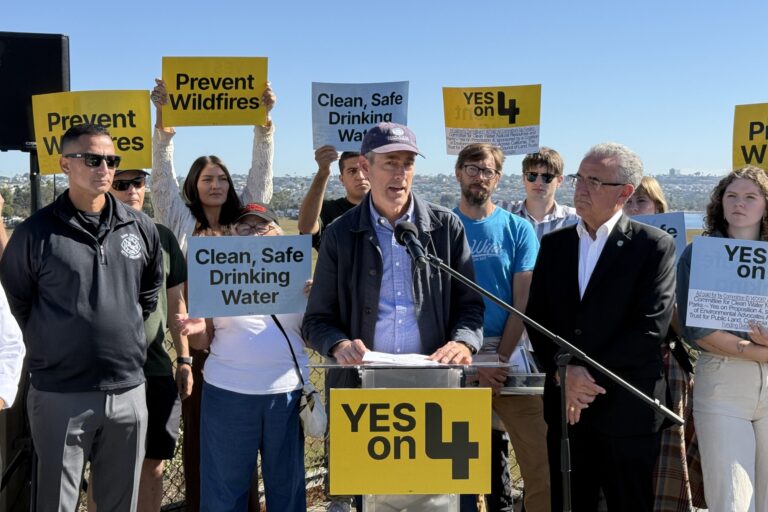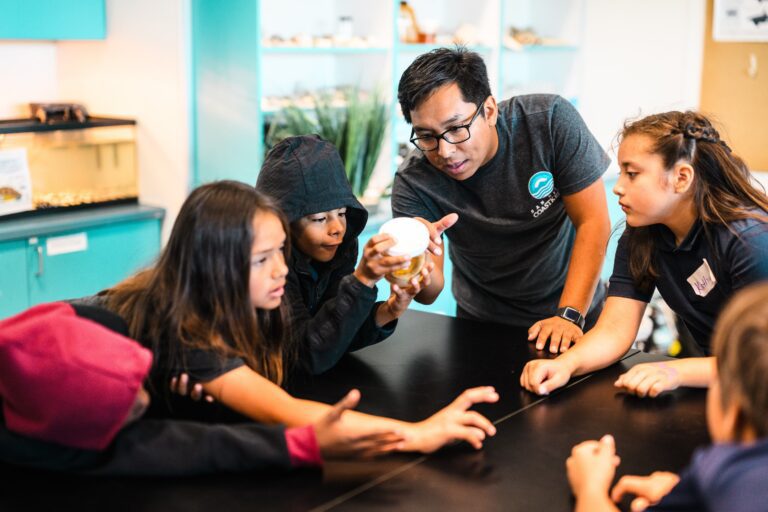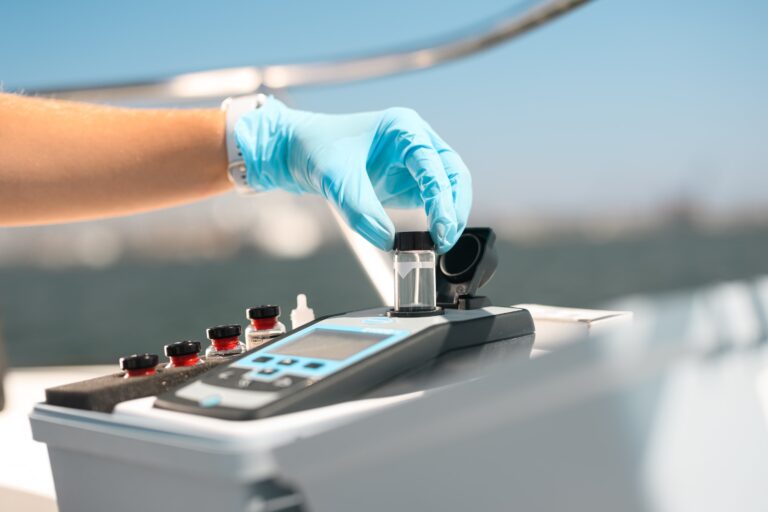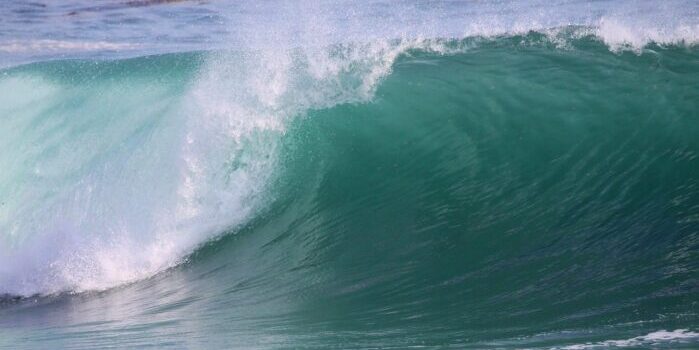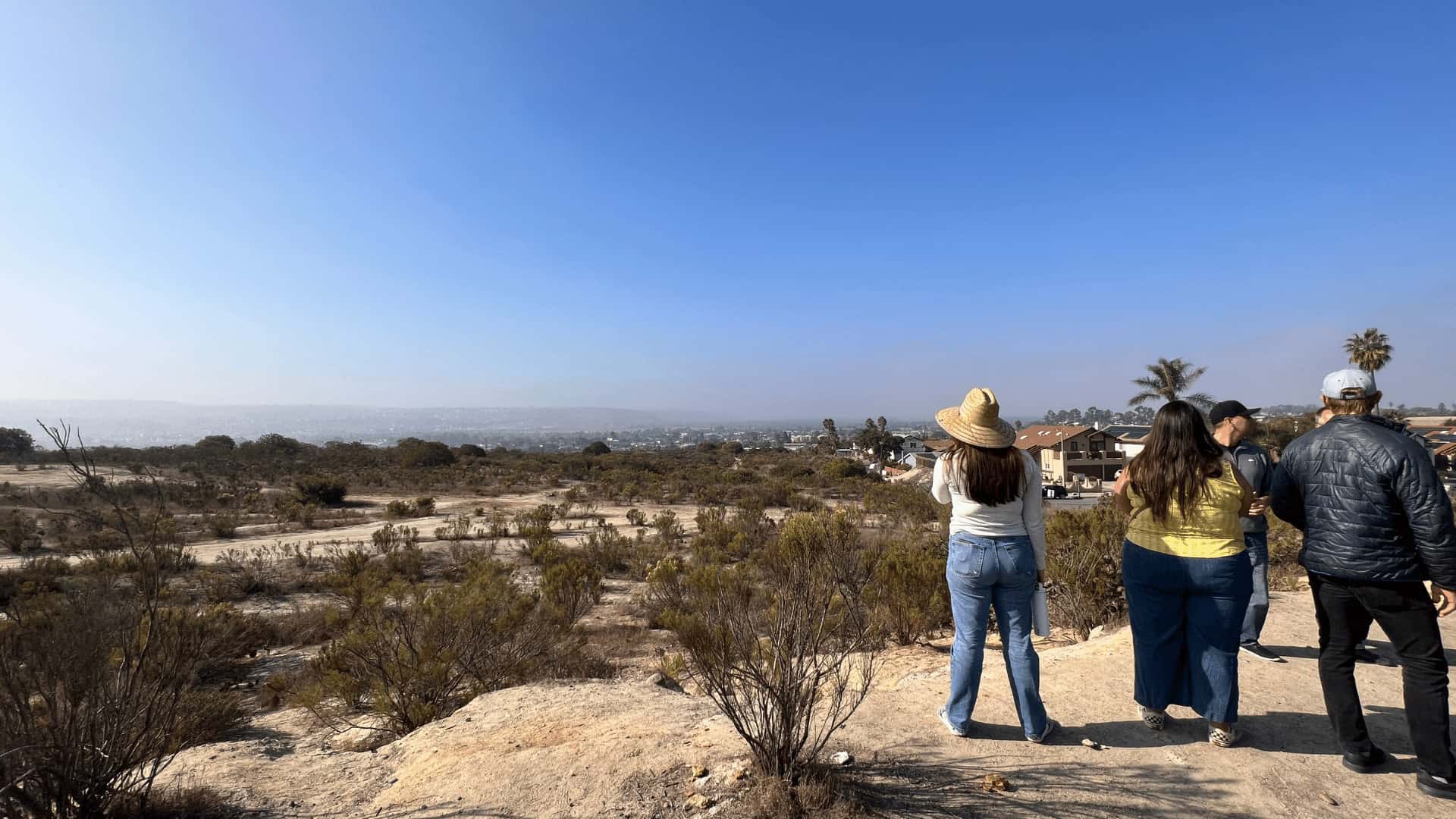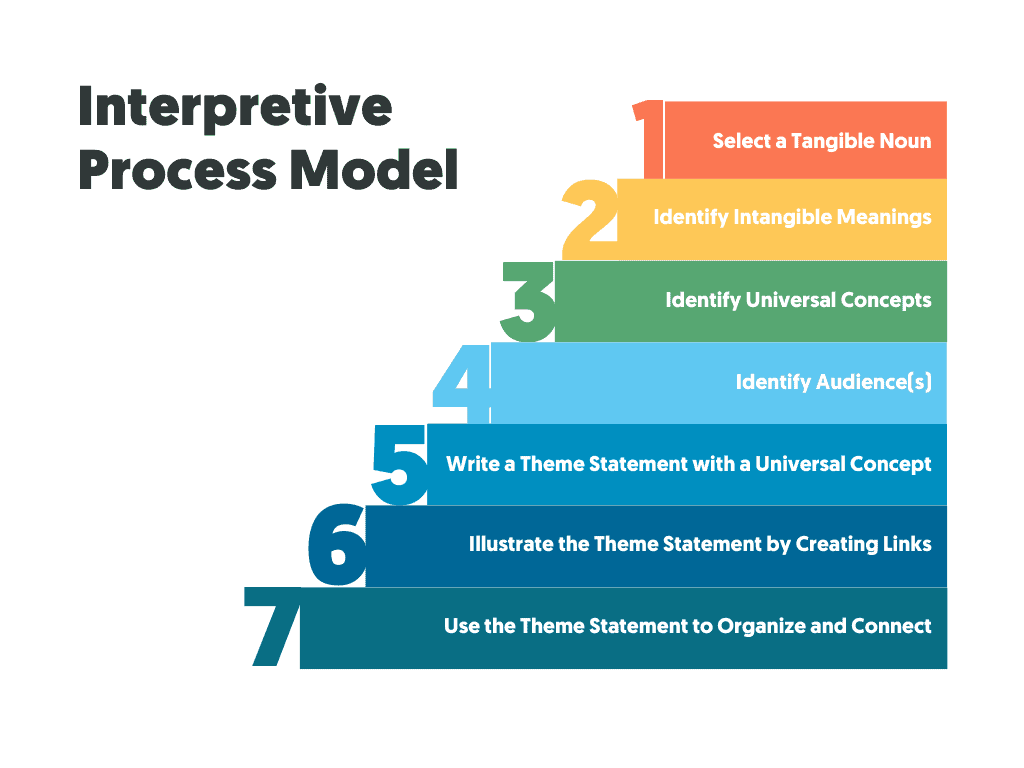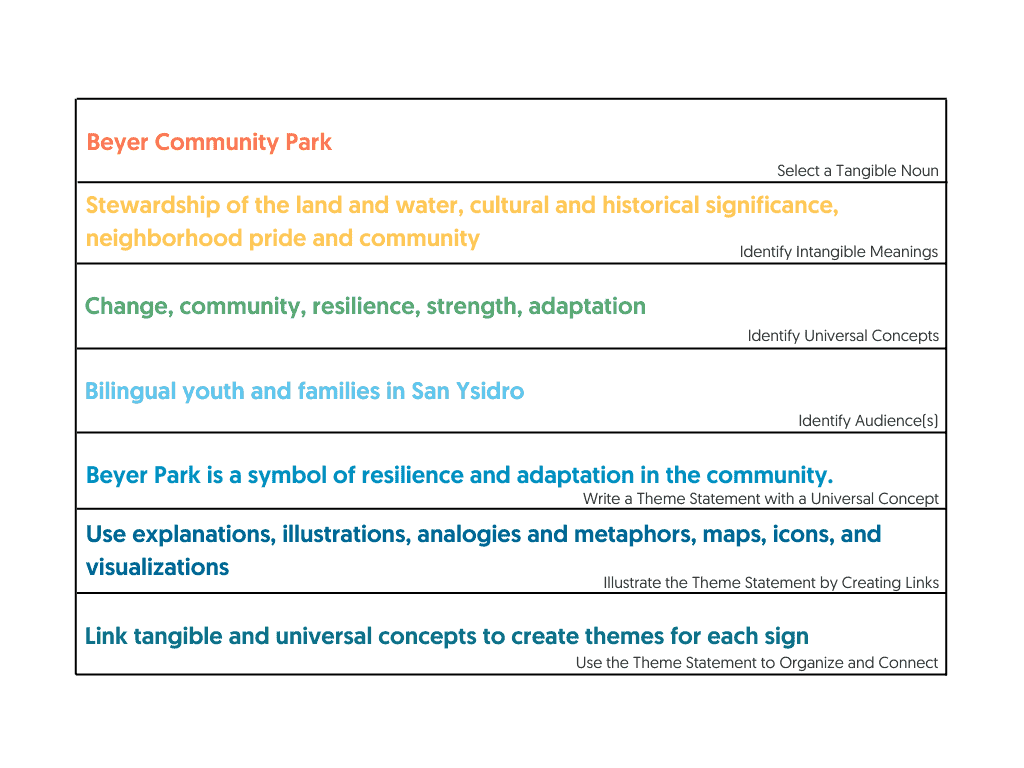San Diego Coastkeeper designed five bilingual interpretive signs for the future Beyer Community Park in San Ysidro, California. The signs will help connect future park visitors to the area’s local watershed, wildlife habitats, ecosystems, and indigenous history.
*This blog features interactive elements and is best viewed on a computer screen.
Use the navigation below to jump to a section.
Interpretive Signs for Beyer Community Park
Hover over the images below for an in-depth look at each thematic sign.
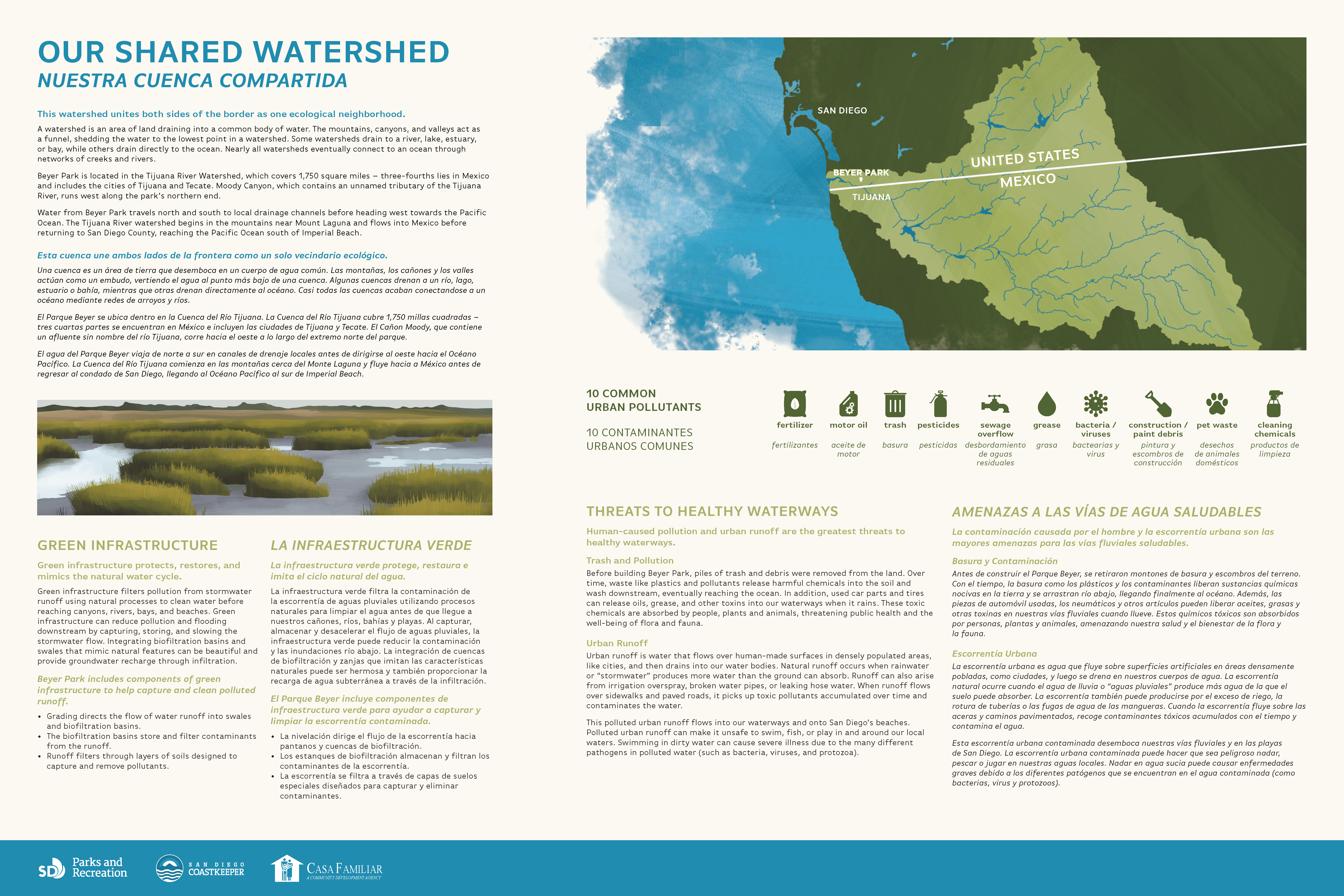

Our Shared Watershed
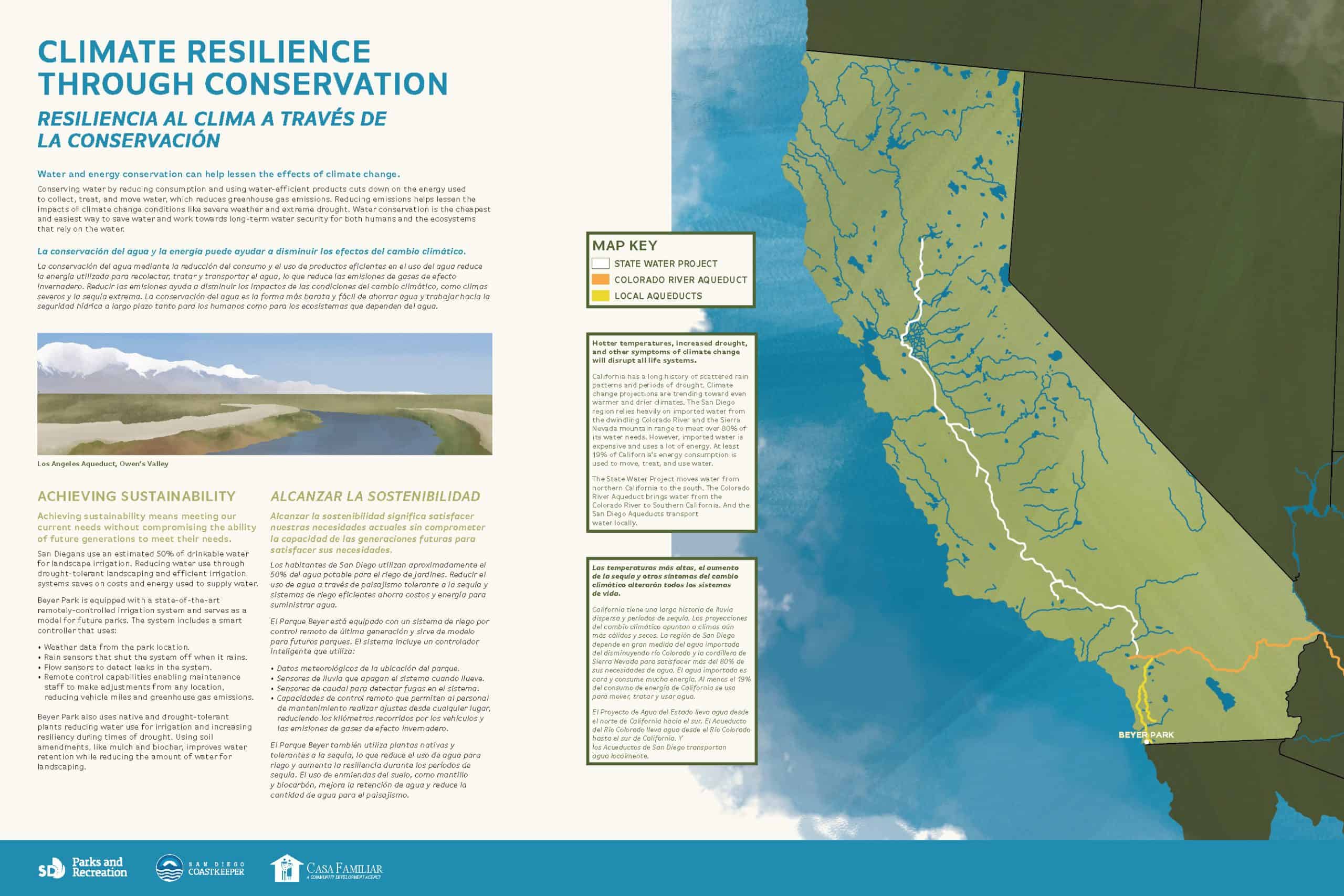

Climate Resilience Through Conservation
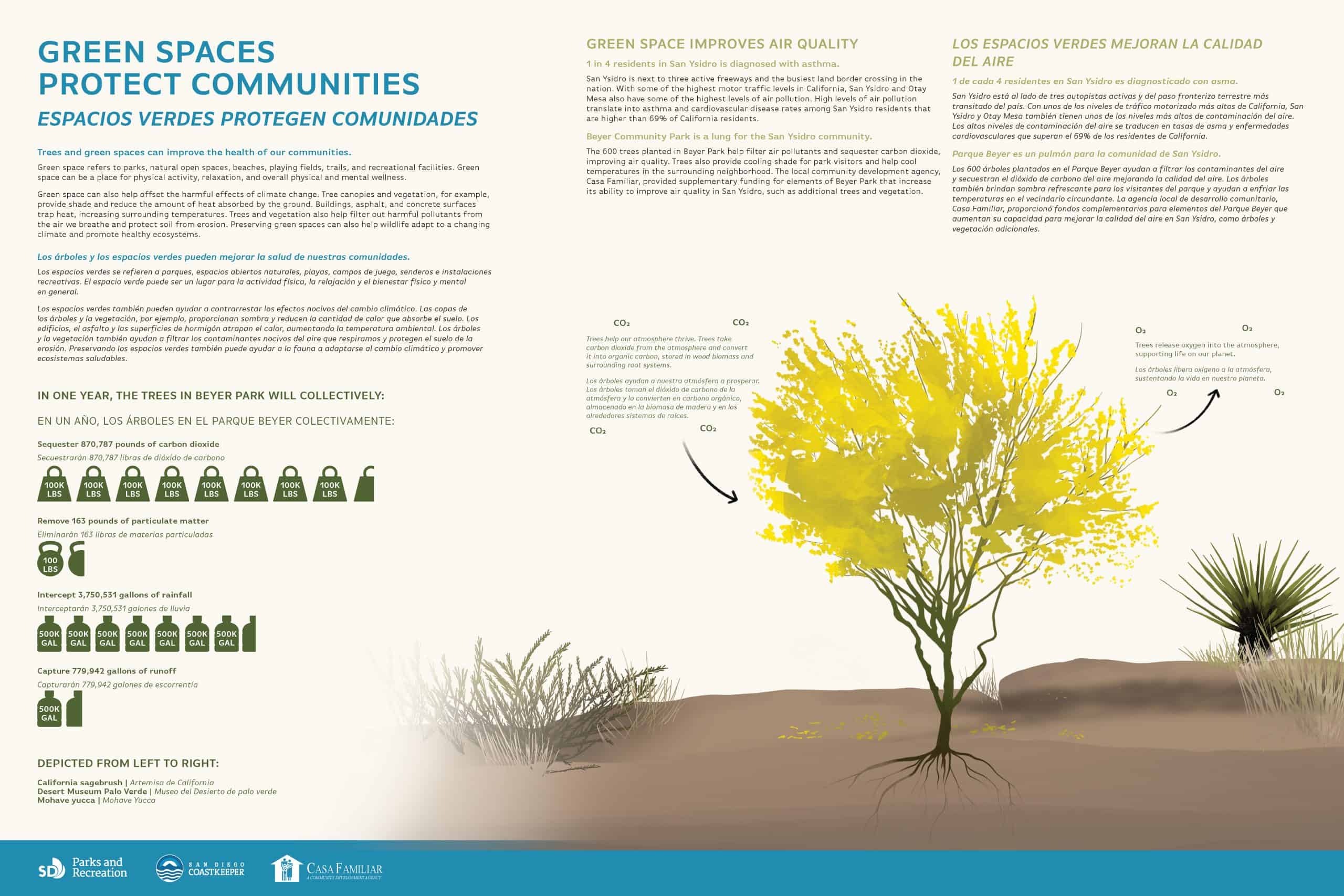

Green Spaces Protect Communities
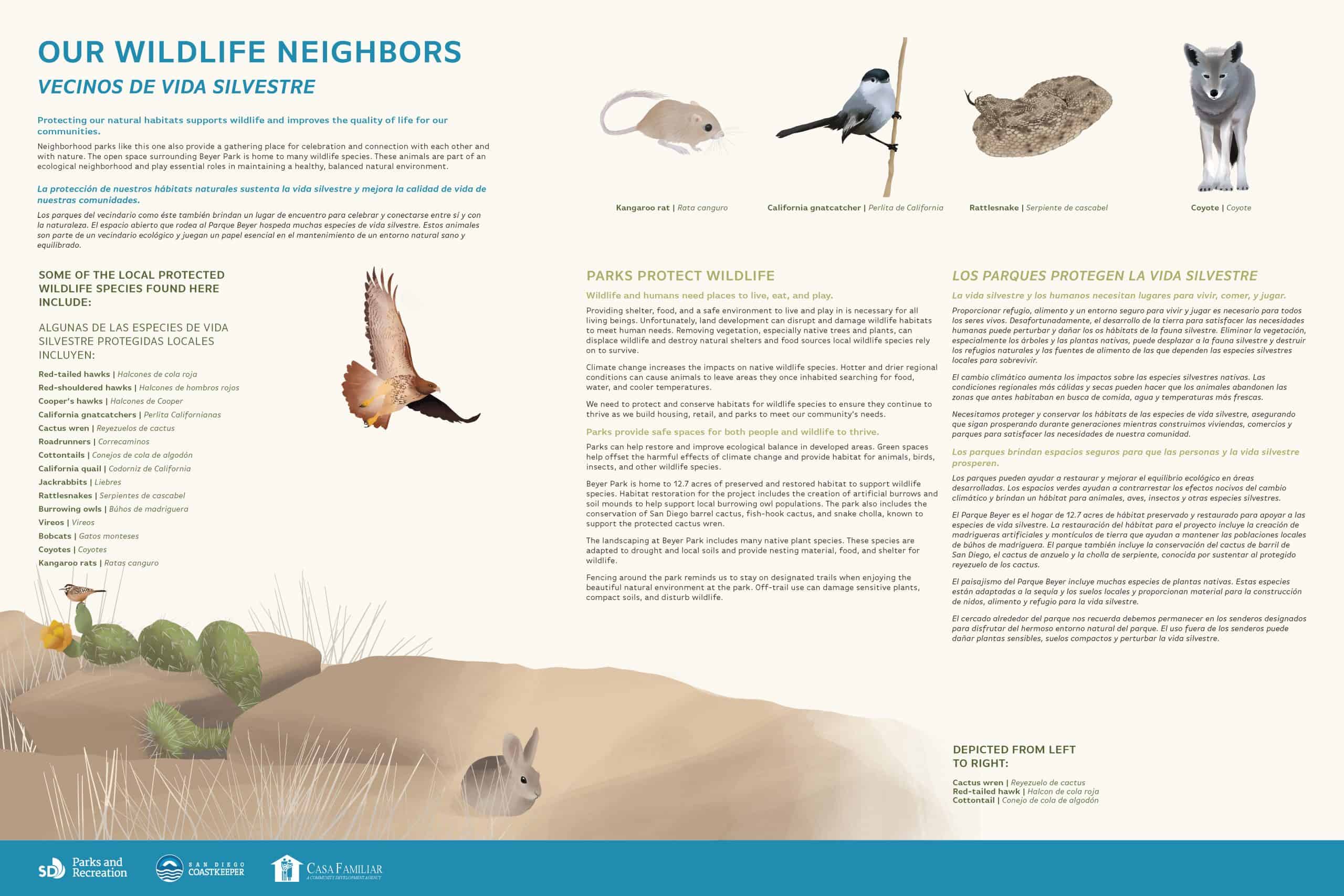

Our Wildlife Neighbors
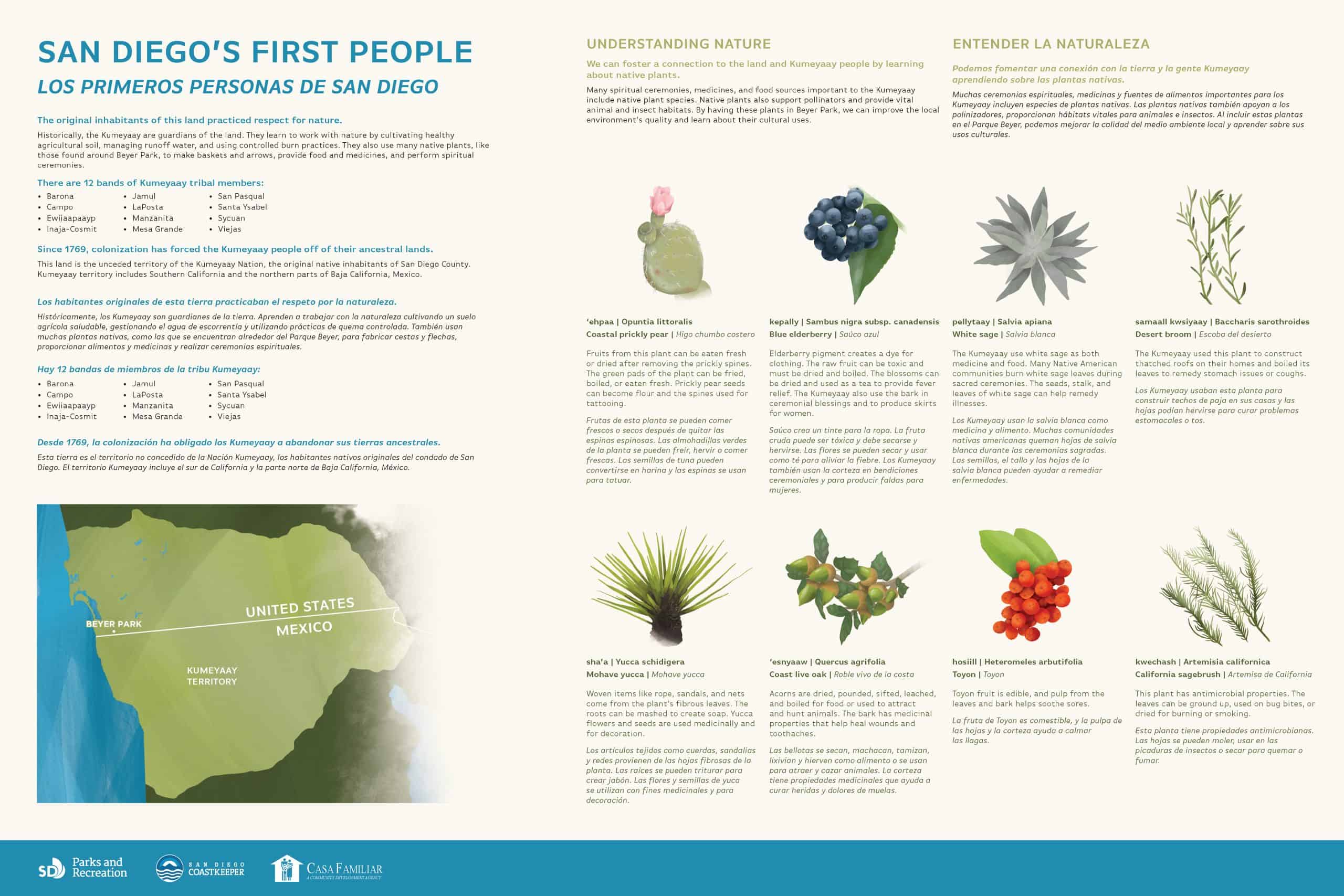

San Diego’s First People
Below we discuss developing the signs from concept to creation. Please continue reading for more information about our creative process.
The Interpretive Process Model
The Beyer Park signs follow the National Park Services’ Interpretive Process Model. This model helps develop accessible content and information so that all different kinds of people build their unique connections to Beyer Park.
Theme Statement
Using this model, we outlined an overarching theme statement (below) for the series and subsequent themes for each sign.
Beyer Park is a symbol of resilience and adaptation in the commmunity
Individual Sign Themes
- Our Shared Watershed: We all live in a watershed.
- Climate Resilience Through Conservation: We can affect our environment.
- Green Spaces Protect Our Communities: We can work together to protect and restore our communities.
- Our Wildlife Neighbors: We can learn from the land around us.
- San Diego’s First People: We can learn from the people before us.
The Creative Process
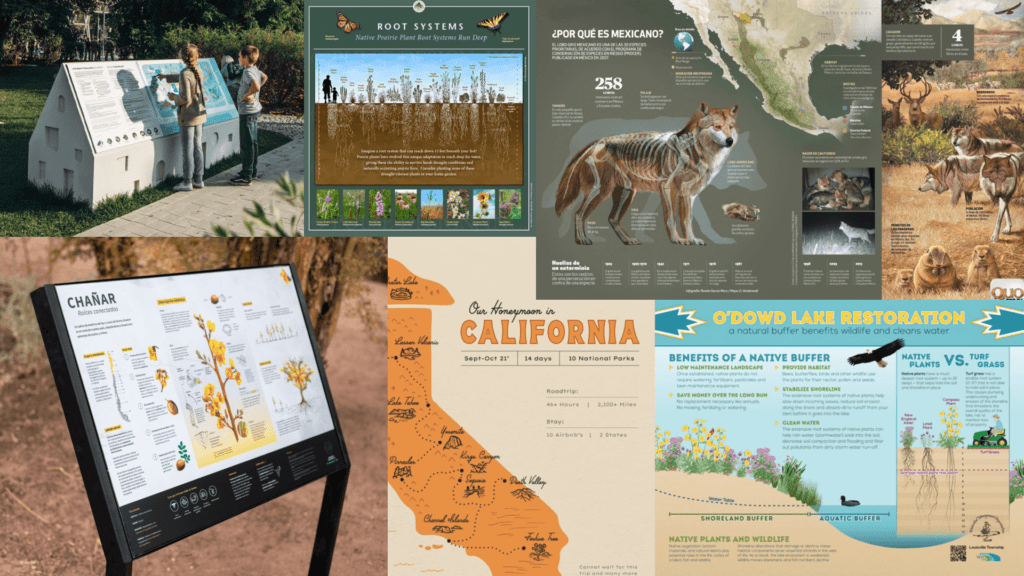

Beyer Park Research and Content Development
As with any large and multifaceted communications project, the most crucial phase is research and content development. During this time, we worked to understand the area’s history and project development and identify any challenges that could impact the design and creative process.
Typically, creative teams receive the final approved text information and concepts before developing any designs. This ensures that any design constraints, such as space and size, are identified before creating the layout and other project elements. It also prevents the back-and-forth between editorial and creative teams, for example, if any text or concepts are removed, saving a project time and money.
Local Environmental Education Mood Board
Before beginning any actual design work, we created mood boards to help define and communicate our vision and set the tone and direction for the project. We incorporated imagery and concepts from our previous projects, past community outreach presentations, and other sources of inspiration – like signs found while hiking or vacationing.
Interpretive Sign Layouts and Sketches
Next, we designed mockups of different sign layouts. Our designer used a grid system to balance the bilingual text and imagery and created digital sketches of the illustrations to give the designs more context and a sense of depth and scale. During this phase, she also developed a sample color palette, hand-drawn maps, icons, and more.
Designing the Beyer Park Interpretive Signs
We created several drafts throughout the rest of the design process while soliciting feedback and incorporating changes along the way. We even printed the signs to scale and tested them with friends and family.
Ultimately, after months of work, we created final versions of the signs and delivered the digital files to our partners to be produced and installed at the future Beyer Community Park.
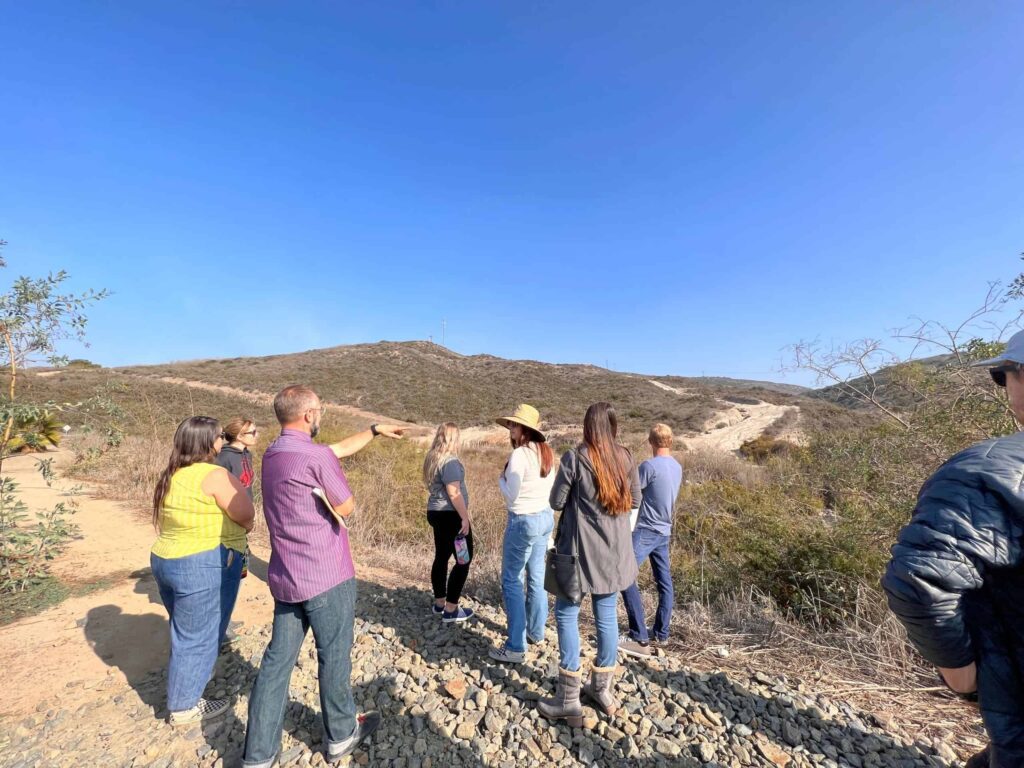

About the Project
We designed five culturally relevant, bilingual, interpretive, and community-focused educational signs in collaboration with Casa Familiar and City of San Diego Parks and Recreation. Communications and Outreach Director Ally Senturk led the project’s creative development. Local San Diego artist Kait Kolsky designed and illustrated the signs. Campaigns Manager Lucero Sanchez helped with translating the content into Spanish, and Education Manager Delanie Medina and Director of Science Rachele Lopez provided subject matter expertise and guidance.
Thank you to all of our incredible partners and collaborators throughout this process! Together, we developed long-lasting resources that will continue teaching San Diegans for years to come.







